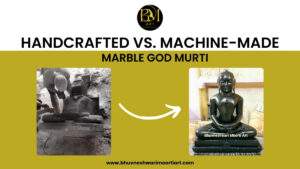
Introduction
The evaluation of a firm’s financial performance is important to an investor, especially when making a decision on the best firm to invest in. Financial ratios provide insight into the attractiveness of investment options, and an investor can determine whether or not to invest in the firm due to its inherent financial characteristics. On the other hand, an investor faced with the option of selecting a firm to invest in from among a number of attractive firms can compare their financial ratios in order to determine the firm that has the highest rates of returns and the lowest risks. Below is an analysis of financial ratios that would be used by a credit rating company such as homework help Moody’s or Standards & Poors. Financial information pertaining to Apple, a technology giant, is used to exemplify how the ratios are assessed.
Financial ratios
Earnings per share
Earnings per share are the number of profits earned by a single share. It is derived by dividing the company’s profits by the number of shares (Hoskin, Fizzell, & Cherry, 2014). As of 2015, Apple’s net income amounted to $53. 40 billion and the number of shares was 5,753,421 (Apple Inc. annual report, 2015). As a result, its earnings per share amounted to $9.28.
Price to earnings ratio
It measures the projected future earnings. A high price to earnings ratio denotes that investors expect future growth in earnings. It is calculated by dividing the firm’s current share price against its earnings per share (Hoskin, Fizzell, & Cherry, 2014). Apple currently trades at $114.06 and its earnings per share as of 2015 was $9.28 (Apple Inc. annual report, 2015). As a result, the price to earnings ratio is 12.2%. The ratio is high, and it showcases that investors expect the company’s financial performance to continue growing.
Price to sales ratio
It defines the number of times an investor is paying for every dollar of the company’s sales. It is calculated by dividing the price of the share by the revenue per share (Hoskin, Fizzell, & Cherry, 2014). Apple’s share trades at $114.06 while its sales amounted to 233.7 billion (Apple Inc. annual report, 2015). The number of sales has to be divided by the number of shares in order to determine the number of sales attributed to one share. As a result, its price to sales ratio was 2.8%.
Debt to equity
Debt to equity assesses how much the company owes creditors and lenders versus how much shareholders have committed. A high debt to equity ratio is risky as it suggests that in the event that the company closes down, the stockholders’ investments will be minimal as most of it will go towards paying debt (Hoskin, Fizzell, & Cherry, 2014). Apple’s total debts amounted to $55,963, while its total equity was $119,355 million (Apple Inc. annual report, 2015). Its debt to equity, therefore, amounted to 0.46. This indicates that the firm has lower debts when compared to equity, which improves the attractiveness of the investment.
Dividend yield
This is the annual cash dividend per share divided by the current price of the stock (Brigham & Ehrhardt, 2013). Apple’s cash dividends declared per share amounted to $1.98 (Apple Inc. annual report, 2015). When compared with the $114.06 price of the stock, the firm’s dividend yield amounts to 1.73%. This amount should be compared with the dividend yield provided by other companies in order to select the company with the highest dividend yield.
Return on equity
It is one of the most important financial ratios, as it measures the returns that shareholders can expect from the overall earnings. An investor can compare the ROEs for different companies so that the highest returns can be selected (Brigham & Ehrhardt, 2013). 15 to 20% of ROE is an acceptable figure. Apple reported a net income of $53,394 billion on $119,355 of shareholder’s equity (Apple Inc. annual report, 2015). Its return on equity, therefore, amounts to 44.7%. its return on equity is favorable as it is higher than the acceptable rates.
Discounted cash flow
The discounted cash flow assesses the attractiveness of an investment opportunity by assessing the future cash flow projections and discounting them in order to determine the current value estimate. An attractive opportunity has to have a higher future value than the current value (Brigham & Ehrhardt, 2013). Based on cash flow projections for 5 years, the intrinsic value of Apple’s common stock amounted to $1,182,216 million (Apple Inc. annual report, 2015). Divided by the number of shares, the intrinsic value per share amounts to $219.58. when compared to its current share price of $114.06, investing in Apple is determined as an attractive opportunity as the discounted cash flows forecast that the company’s share price will increase in the future, and the investors will get higher values for their investments.
Value of financial ratio analysis
The Return on Equity analyzes the returns generated by the investments made by the stockholders. The ROE is decomposed into Returns on Assets (ROA) and financial leverage so that it can give insight into the company’s financial and investment decisions. Financial leverage is further decomposed into net profit margin and asset turnover (Brigham & Ehrhardt, 2013). Apple had a return on equity of 46.25%. The ROE was determined by the company’s returns on assets, which amounted to 18.38%, and financial leverage was 2.43. the company’s ROE increased from the previous year, whose ROE was 35.43%, and it was determined by ROA of 17.04% and financial leverage of 2.08. When using a three-component decomposition of ROE, the income statement is used, as the net profit, asset turnover, and financial leverage determine the ROE. Apple’s net profit margin was 22.85%, while its asset turnover was 0.80, and its financial leverage was 2.43 (Apple INC Annual Report, 2015).
Differences between international financial reporting and U.S. GAAP accounting
The International Financial reporting Standards (IFRS) is used by more than 100 countries, and it deviates from U.S. GAAP accounting in that the former is based on rules while the latter is based on principles. The two have varied techniques in how financial items are treated. For instance, with regards to intangibles, GAAP considers them at fair value, while GAAP considers the future economic benefits derived from them. Another major difference involves inventory costs, as GAAP considers either the last in first out (LIFO) method, or the first in first out (FIFO) method. The use of both techniques presents problems to analysts, especially when they are making comparisons. However, IFRS only considers the LIFO method, which is an advantage as financial analysts do not have to adjust LIFO inventories when making comparisons. The third difference between IFRS and GAAP regards write downs, as under GAAP, once inventory has been written down, there cannot be any reversals. This is different for IFRS, as write downs can be reversed for future periods if specific criteria are met (Smith, 2012).
The main advantage of adopting IFRS is that it allows for greater comparisons as the financial statements for a company in one country can be compared with that of a company in another country. In contrast, GAAP is not widely accepted, as its financial statements have to be altered in order to ensure more effective analyses. As explained by Harris et al (2013), IFRS is principle-based, and as a result, it allows for more flexibility, as focus is not on stringent rules, but on the process as a whole. As a result, companies are able to arrive at valuations using processes that are suitable to them. Despite the advantages of IFRS, it also has major disadvantages, such as financial manipulation, as companies can only utilize the valuation models that give them undue advantage. For instance, changing the firm’s inventory can have a big impact on the firm’s profit volumes. Secondly, the implementation of IFRS is more costly than GAAP, especially to small firms as the level of accounting analysis required is more detailed. Firms may opt to utilize GAAP for cost-effective reasons.
Conclusion
An investment decision has to consider the risks and rewards that will be brought about by the investment. For an investor, it is vital to carry out financial analysis by assessing the company’s financial ratios. Ratios such as the earnings per share, price to earnings ratios, and price to sales ratio highlight the expected returns associated with the investment. On the other hand, the debt to equity ratio assesses the risks associated with the results. It is also important to discount future cash flows in order to gauge the expected future earnings. Based on the results of the analysis, the investor determines whether the investment is viable based on the rewards and risks, and the type of company to invest in if there are many options to choose from. Lastly, IFRS has been compared to GAAP, and it has determined that IFRS is preferred for its ease of comparability and flexibility, while GAAP is preferred for its cost-effectiveness and the fact that it contains no room for manipulation.




More Stories
Learn The Pros And Cons of Internal Job Recruitment
6 Pros And Cons To Consider While Downsizing Your House
Learn How Bookkeeping Is Done!